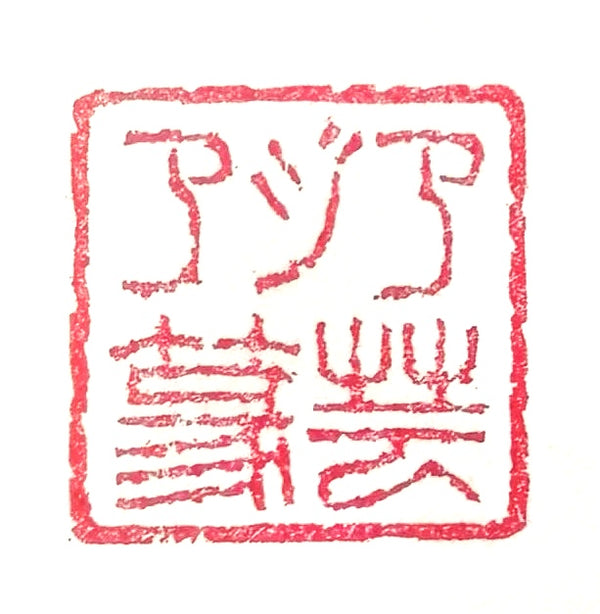Historical masterpieces and their anecdotes about seal materials - Seal materials shrouded in legends
Share
Introduction
The "seal material" used in seal carving is not simply a material for carving; sometimes its very existence is "art" and "history" itself.
Among the seal materials that are deeply connected to calligraphy, there are many masterpieces that have been passed down through the ages. Each stone tells the story of its owner, and the inscriptions carved into them contain ideas and spirit.
This time, we will introduce some masterpieces of seal materials that have remained in the history of seal carving, as well as some anecdotes related to them.
Masterpiece 1: Tian Huangshi “Qianlong Seal”
The king of seal materials beloved by the emperor
The Qianlong Imperial Seal, said to have been used by the Qing Emperor Qianlong, is one of the most famous seal materials in the history of Chinese seals. The seal material used was Tianhuangseki, and it is now considered a national treasure.
Anecdote
Emperor Qianlong was an art lover who was well versed in calligraphy, poetry, and painting, and it is said that he always stamped his own works with this seal. There is also an anecdote that he felt that the "golden color" of Tianhuangshi was sacred, and sealed off the mines in order to obtain the stone.
Masterpiece 2: Wu Changshuo's "The Seal of Bitter Iron"
The soulful seal left behind by a master seal carver
Wu Changshuo, a seal carver, calligrapher and painter active from the late Qing to the Republican period, often used a material engraved with the word "bitter" in his seal carvings.
"Kutetsu" is one of his pen names, and is also a word that symbolizes the hardships of life and his determination to pursue art.
Anecdote
Many of Wu Changshuo's seals are carved on Qingtian stone or Shoushan stone, and are known for their bold, substantial lines and bold compositions. One of the seals he used was passed on to his disciples after his death and is still on display in an art museum today.
Masterpiece 3: Chicken Blood Stone "One-character Treasure Seal"
A seal material that puts soul into each character
Chicken blood stone, produced in Changhua, China, is known as a high-quality seal material with crimson patterns resembling blood. Among these, a piece known as the "One Character Treasure Seal" is a special seal inscribed with only one character, expressing the artist's feelings.
Anecdote
A seal engraver carved the character "Silence" ("stillness"), his life motto, into the finest chicken-blood stone. The seal, which embodies philosophy, aesthetics, and spirituality in just one character, has a sublime quality reminiscent of a Buddhist statue, striking the hearts of those who see it.
Masterpiece 4: Seal material with no ink markings, beloved by literati
Seals that speak without writing
Among the Ming and Qing dynasties, there was a culture of literati who did not carve anything into the surface of their seals, but instead admired only the beauty of the stone. By leaving the seals uncarved, "unmarked seals" could be enjoyed in their natural beauty, and these seals were especially prized as objects of appreciation and collection.
Anecdote
One scholar said that "Just rolling the Tianhuang stone in my hands calms my soul." This seal material remained uncarved for decades, and was eventually passed on to a disciple, who said, "This is art."
What we can learn from masterpieces of seal materials
Rarity of the material : The value of the seal material varies greatly depending on its origin and quality, such as Tianhuang stone or chicken blood stone.
The story of the user : The thoughts and life of the person who carved it are reflected in the seal inscription, and the stone itself seems to have a personality.
Wide range of appreciation : Not only the engraved impression, but also the unengraved state has value as "art."
summary
Seal materials are not just stones on which to carve letters, but "crystals of culture" that have imprinted the thoughts of people and the times. By learning about historical masterpieces, you will develop a new perspective and respect for your own work and seal materials.
Why not try carving your own story into your seal while interacting with it?
